
From Kargil to the CoupEvents that shook PakistanNasim Zehra
My Beloved Mother(Late Begum Akhtar Akhlaque Hussain)& my Beloved Motherland
CONTENTS
ACKNOWLEDGEMENTS 7WHY KARGIL?THE ROOTS OF CONFRONTATIONTHE KARGIL OPERATION: CONTEXT AND CONTRADICTIONSDIVERGENT TRACKS: DIALOGUE VS. OPERATION KOH-I-PAIMANECKS ON THE LINE AND THE LOTUS LAKEKARGIL UNCOVEREDBOLT FROM THE BLUEIN THE FIRING LINEFIGHT-BACK 193MYTH-MAKING AND CRISIS MANAGEMENTMAPPING EXITSNUCLEAR CARD AND WASHINGTONS GAINSALL FALLS APARTTHE JULY 2 DCC MEETINGTHE END GAMEIN THE EYE OF STORMTHE AUGUST QUADRANGLEA BRIDGE TOO FARTHE COUP
From Kargil to the Coup
READING KARGILCONCLUSION 463SOURCES OF PRIMARY DATA (INTERVIEWS, CONVERSATIONS ANDWRITTEN EXCHANGES)INDEX 471END NOTES
ACKNOWLEDGEMENTSook writing is seldom a solo effort; a book always flows from a web ofsB upport, interactions and relationships. Acknowledgments oftensketch the web.Here is the web from which From Kargil to the Coup, was produced.My appreciation to all those civil and military officers, ministers andpoliticians in Pakistan, and also in India and in the US (listed in the book)who took time out and were willing to be interviewed.At the core of this undertaking are the many courageous andconscientious officers of the Pakistan army without whose cooperation thestory of Operation Koh Paima could not have been reconstructed. Itincluded, among others Lt general (r) Nadeem Ahmad, Lt general (r )Gulzar Kiani, Lt general (r) Javed Hassan, Lt general (r) Amjad Shuaib,Brigadier (r) Syed Azhar Raza, Brigadier (r) Khalid Nazir. While someofficers have been named many opted to remain anonymous. Some evenreached out to me to tell the incredible story that they were part of. I amgrateful to each and every one of them for their trust and confidence.I am indebted to Professor Rifaat Hussain, Professor Ayesha Jalal,Professor Hassan Abbas and Riaz Mohammad Khan who were particularlygenerous with their time. At various occasions they acceded to my requestand reviewed my work. Jalil Abbas Jillani and Akbar Zeb among othersalso patiently went through many chapters giving me candid and criticalfeedback. On occasions friends including Mushahid Hussain Sayed, Dr.
From Kargil to the CoupMoeed Yusuf, Kathy Gannon, Aga Imran Hameed, Dr. Maleeha Lodhi,Zahid Hussain and Sherry Rehman also took time out to review sectionsof my work. Dr. Shireen Mazari, throughout remained a dependablefriend.My group of close friends, Shazreh Hussain, Fatima Hameed andHumaira Sheikh helped along the way...they often prodded me to hurryand cross the finishing line!And to my family: my deepest gratitude to all of them for theybelieved in me as their unstinted support throughout this long drawn outbook writing process. My late Mothers never give up and never grumblephilosophy helped as did my familys consistent interest in my work, tosoldier on and complete what at times seemed to be an impossible task.When my attention was often captured by the more immediate, mysiblings- sisters Anjum Zehra, Shamim Zehra, Sharaf Zehra , QudssiaAkhlaque, Asya Akhlaque , Ghazala Kazim and brother Khurshid Kazim-kept me on track by caringly nudging me to carry on, by insisting my effortwas worthwhile. A warm thank you to my brothers-in-laws, Sadiq Bhai,Jamshed, William , Mahmood, Humair and to my nieces Shahbano, NoorZehras (senior and junior!), Juggun, Sukaina, and nephews Zeeshan,Farhan, Jaffer, Mehdi, Wali, Hussain, Zain and Raza for their affectionand encouragement through this journey. Manizeh, both friend and familytoo had many wise words to share through this long journey.My late father Mianjans tough work discipline and brother Abbassintensely chaotic energy still stays afloat within the family zoneand Ibenefitted from that too!In what was so often also a lonely and tedious effort, it was myMustaphas delightful energy, first as a little boy and then as a teenager,that helped me bounce back.For their guidance in especially my down and confusing moments,special gratitude to Suhail Bhai, late Shah sahib and to Mian sahib.Beyond primary sources my research was primarily dependent onnewspaper and journals. Nasir Zaidi, the star researcher at the IslamabadRegional Studies Institute provided me the gold mine of Indian andPakistani newspapers, critical to reconstructing the events from Kargil to
Acknowledgements9the coup. At the Harvard University libraries many unnamed individualsalso pulled out microfiche copies of newspaper reports and journal articles.Their giving attitudes made my research task truly gratifying.Without Adil Abbasis support on the multiple demands Isimultaneously worked on, this project would have been an arduous task.Special appreciation also for Shehrbano Kazim, who remainedsteadfast in her support especially in the last few years of this undertaking.A big thank you finally also to all those individuals in the variouslibraries and coffee shops in Pakistan and abroad, where I intermittentlyresided over the years for very long hours to work on my manuscript.Whether it was the management and tea-providers at the library of theInstitute of Strategic Studies or the program officer Jorge Espada and HollyAngel at the Harvard Universitys Asia Centre, their friendly demeanorsenergized me to work untiringly in solitude.There are indeed many others and especially the management andpublishing team at Sang e Meel without whose special interest and effortthis work would not have found its way to you !
IntroductionWHY KARGIL?n recent years, across the Pakistan-India border and the Line ofIControl(LOC), guns have tended to converse more often than policy-makers. While the relationship between these two nuclear-armed states,Pakistan and India, influence the lives of almost one fifth of humanity, yetunfortunately hostility appears to be the only real durable factor in thisinter-State relationship. This hostility rules out genuine cooperation whileminimizing the possibility of resolving outstanding issues ranging fromSiachin, Sir Creek, Kashmir, to water and trade disputes. Against thebackdrop of this abiding antagonism South Asia remains the worlds leasteconomically integrated region. Regional trade in South Asia accounts foronly 5% of the overall trade. The people of South Asia are confronted withgrave environmental threats including global warming, rising water levelsleading to water and food scarcity, displacement of large populations, risein infectious disease epidemics.South Asia, the worlds most potent nuclear flash point, is a region indesperate need of peace and security.Yet why is Pakistan-India peace illusive?The 1999 Kargil battle, code-named Koh-e-Paima (Operation KP),explains this well. Its events weave the story of repeated blunders, involvingnational and regional players, that prevent genuine peace efforts fromsucceeding.
Introduction11My work on Operation Koh-e-Paima (Operation KP) began as achapter in a book I started writing in 2002 on Pakistan-India relationsduring the period after the May 1998 nuclear tests. When the chapter onKargil had crossed ninety typewritten pages, various friends who read it,insisted that the book should be exclusively on Operation KP.Operation KP had suddenly surfaced in the news only weeks after theNawaz-Vajpayee Lahore Summit, which had ended with the LahoreDeclaration, in which both governments had decided to open discussionson the perennial and intractable Kashmir dispute. Initial news ofheightened fighting along the LOC (Line of Control) had taken Pakistanisby surprise. It raised endless questions regarding the operation: Why wasit conducted? Who gave the go-ahead for it? Who participated in it? Whatwas its outcome? What should have been publicly known facts had turnedinto deep mysteries because the operation itself was a covert undertaking.For example: Who was actually fighting? Was Operation KP governmentapproved? Was it across the LOC in Indian Held Kashmir (IHK) or inAzad Jammu and Kashmir (AJK)? Was the operation proving difficult andcostly for Pakistan? Had it hurt India in any way? In retrospect, it becameevident that there was a deep split over Operation KP between the civilianand military leaderships.The end phase of Operation KP proved traumatic for Pakistan. ThePrime Minister suddenly left in the early hours of 4 July 1999 forWashington DC where the Clinton-Sharif meeting produced the Pakistan-US statement calling for the withdrawal of troops. At home the fierceif subduedcontestation began in civil, military, and public circles as towhether Pakistan had gained or lost from the operation. In this highlytoxic environment, despite efforts at keeping the civil-military trust intact,the proverbial man on horseback did ride in. Pakistan had twice beforeexperienced
Next page
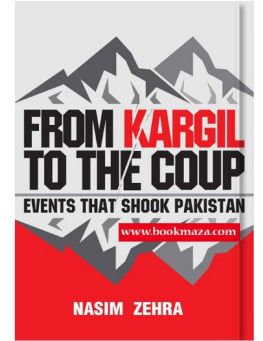
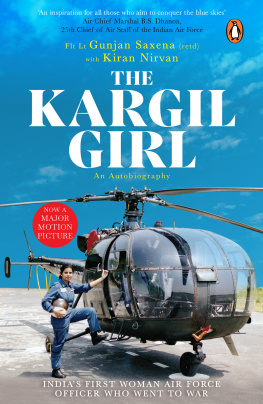
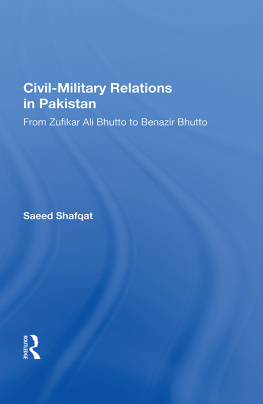


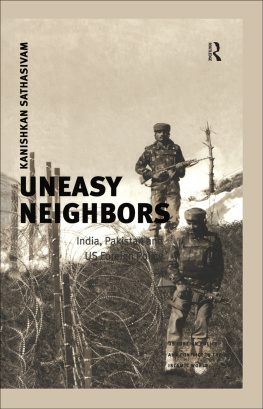


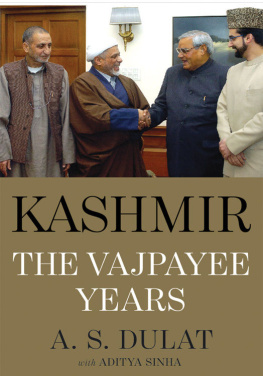
 From Kargil to the CoupEvents that shook PakistanNasim Zehra
From Kargil to the CoupEvents that shook PakistanNasim Zehra